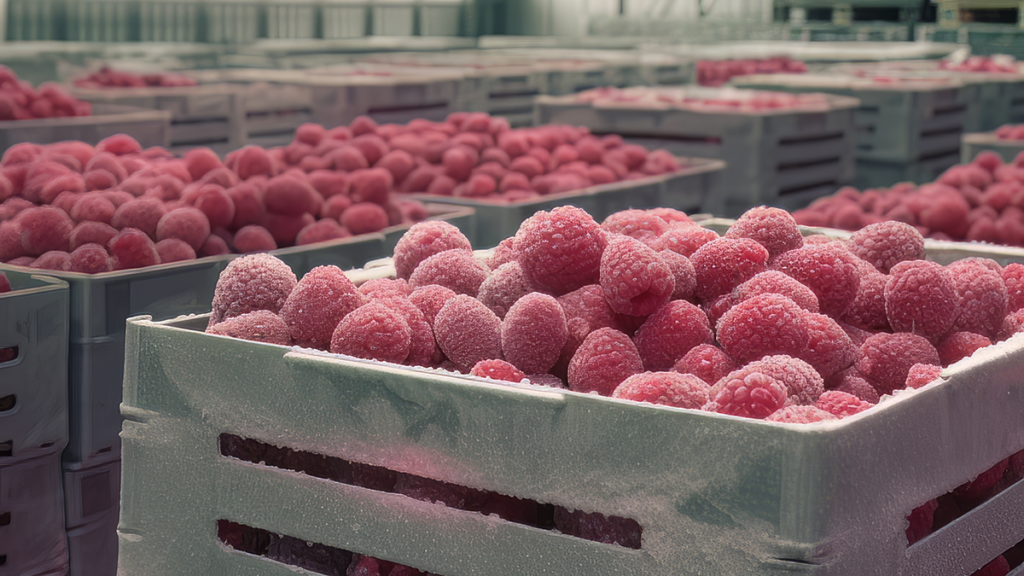The chilled food industry has long been a cornerstone of the global food supply chain. With the ever-increasing demand for fresh, quality products delivered promptly to consumers, the sector has looked to technological advancements to meet these challenges.
Automation, in particular, has emerged as a key solution, offering significant benefits in terms of efficiency, safety, and quality control.
In this article, Paige West, Editor, IOT Insider delves into the technical aspects of automation within the chilled food industry, examining its implications and potential future directions.
1. Automated Storage and Retrieval Systems (AS/RS)
AS/RS are computer-controlled systems designed to automatically deposit and retrieve products from defined storage locations. Within the chilled food sector, AS/RS are particularly useful in large cold storage warehouses. By minimising the time that doors are open and reducing the movement of people and machinery, these systems help maintain consistent temperatures, ensuring product quality. Moreover, the precision of AS/RS reduces the risk of human error in inventory management.
2. Robotic picking and packing
While many industries have adopted robotic arms for various tasks, the chilled food industry presents unique challenges due to the diversity of product shapes, sizes, and fragility. Advanced vision systems, combined with machine learning algorithms, enable robots to identify, pick, and pack a wide range of products with high accuracy. This not only speeds up the packaging process but also ensures that products remain undamaged.
3. Conveyor belt systems with integrated sensors
Modern conveyor belt systems in chilled food processing plants are equipped with integrated sensors that monitor product temperature, weight, and other vital parameters. These sensors provide real-time feedback, allowing for immediate adjustments. Such automation ensures that products remain within specified parameters, guaranteeing their freshness and safety.
4. Predictive maintenance tools
Predictive maintenance tools utilise data analytics to predict when equipment in chilled food processing plants might fail. By analysing data from sensors embedded in machinery, these tools can notify engineers in advance of potential issues. This proactive approach reduces downtime and helps maintain a consistent production flow.
5. Quality control through machine vision
Machine vision systems, equipped with high-resolution cameras and advanced image processing algorithms, are now commonplace in the chilled food industry. These systems can detect defects, contaminants, and inconsistencies in products, ensuring that only items meeting stringent quality standards reach consumers.
6. The role of IoT in automation
The Internet of Things (IoT) plays a pivotal role in enhancing automation within the chilled food sector. By connecting various devices and systems, it provides a cohesive platform for data collection, analysis, and decision-making. This interconnectedness allows for real-time monitoring and adjustments, optimising the entire supply chain.
Future implications
As technology continues to evolve, it is anticipated that automation within the chilled food industry will become even more sophisticated. Advancements in artificial intelligence, machine learning, and robotics will further streamline processes, reduce waste, and enhance product quality. While there will always be a need for human oversight, automation presents an opportunity for the industry to meet growing consumer demands efficiently.
But, while the benefits of automation in the chilled food industry are numerous, the adoption of such technology is not without its challenges.
The challenges
1. High initial investment costs
Implementing advanced automation systems often requires significant capital expenditure. For many small to medium enterprises (SMEs) within the chilled food sector, the initial cost can be a substantial barrier. While the return on investment (ROI) over time can be high, the upfront financial burden can be daunting.
2. Integration with existing systems
Many chilled food processing plants have legacy equipment and systems in place. Integrating new automation technologies with these existing systems can be complex, potentially leading to operational disruptions and inefficiencies if not managed correctly.
3. Skilled workforce requirement
While automation can reduce the need for manual labour in certain areas, it also necessitates a workforce skilled in operating, maintaining, and troubleshooting advanced technologies. Training existing staff or hiring new talent with the requisite skills can be both time-consuming and costly.
4. Dependence on reliable power and connectivity
Automated systems rely heavily on consistent power and strong connectivity. Any disruptions in power supply or network connections can lead to significant operational challenges, especially in environments where maintaining specific temperatures is crucial.
5. Consumer perceptions
While automation can enhance product quality and safety, there’s a potential for consumer resistance. Some consumers may perceive automated processes as less ‘natural’ or ‘authentic’. Addressing these perceptions through transparent communication is essential.
6. Technological failures
As with all technologies, there’s the risk of system failures or malfunctions. In the chilled food industry, where product quality and safety are paramount, any technological failure can have severe repercussions, from financial losses to potential health risks for consumers.
Incorporating automation into the chilled food industry presents a myriad of opportunities, but it’s essential to address these challenges head-on. By doing so, the sector can reap the benefits of increased efficiency and enhanced product quality while navigating the complexities that such advancements bring.
Through the integration of advanced technologies, the sector is poised to deliver products of the highest quality, with increased efficiency and reduced environmental impact.
